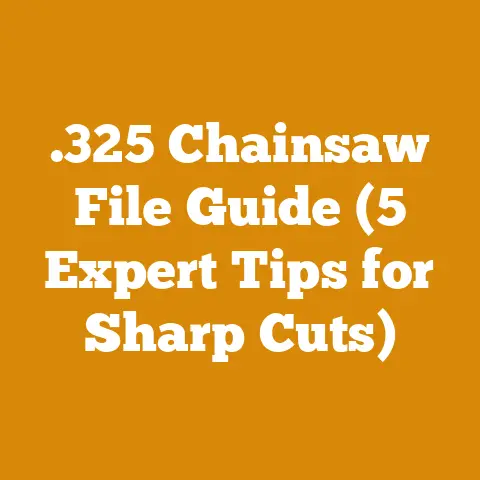Can You Cut the Top Off an Evergreen Tree? (Expert Tree Pruning Tips)
Can You Cut the Top Off an Evergreen Tree? (Expert Tree Pruning Tips)
The crisp scent of pine in the air, the crackle of a wood fire – these are some of the simple joys that connect us to nature. And for many, that connection involves managing evergreen trees, whether for aesthetics, safety, or energy savings. Think about it: a well-pruned evergreen can allow more sunlight to reach your home in winter, reducing your heating bills, and provide essential shade in the summer to save on air conditioning. This is where understanding proper pruning techniques becomes crucial, especially the question of topping an evergreen. It’s a question I’ve been asked countless times over the years, and the answer isn’t always straightforward.
Topping an evergreen – essentially cutting off its main leader – is a technique that can have serious consequences for the tree’s health and appearance. While it might seem like a quick fix for size control, it often leads to long-term problems. Let’s dive into the intricacies of evergreen pruning, exploring why topping is generally discouraged and what alternative techniques you can use to achieve your desired results.
Understanding Evergreen Growth Habits
Before we delve into the “how,” let’s understand the “why.” Evergreens, particularly conifers like pines, spruces, and firs, typically exhibit strong apical dominance. This means that the terminal bud (the bud at the very top of the tree) produces hormones that suppress the growth of lateral buds, resulting in a dominant central leader and a characteristic conical or pyramidal shape.
- Apical Dominance: This is the natural tendency for the main stem to grow more strongly than side branches.
- Lateral Buds: These are the buds located along the sides of the branches.
When you remove the terminal bud by topping, you disrupt this natural hormonal balance. The tree responds by sending out multiple new shoots from the cut area, resulting in a dense cluster of weak, upright branches often referred to as a “witch’s broom.”
Why Topping is Generally a Bad Idea
Here’s why topping is almost always a bad idea for evergreen trees:
- Aesthetic Damage: Topping ruins the natural shape of the tree, creating an unnatural, unattractive appearance. The tree will never regain its original form.
- Weakened Structure: The new shoots that emerge after topping are weakly attached and prone to breakage, especially in heavy snow or strong winds. This is because they lack the strong, supportive wood that develops in naturally growing branches.
- Increased Disease and Pest Susceptibility: The large wound created by topping is an open invitation for insects and diseases to enter the tree. Fungi can easily colonize the exposed wood, leading to decay and further weakening the tree.
- Reduced Lifespan: The stress caused by topping can significantly shorten the lifespan of the tree. The tree expends a great deal of energy trying to recover, making it more vulnerable to environmental stressors.
- Unpredictable Growth: Topping stimulates excessive growth near the cut, leading to a dense cluster of branches that requires more frequent pruning in the future.
- Safety Hazard: Weakly attached branches created by topping can break off and fall, posing a safety hazard to people and property.
Alternative Pruning Techniques for Evergreens
Instead of topping, I recommend using these alternative pruning techniques to manage the size and shape of your evergreen trees:
1. Selective Branch Pruning
This technique involves removing individual branches to thin out the tree and improve its overall shape. It’s a much more natural and less stressful method than topping.
- How to do it: Identify branches that are crossing, rubbing, or growing in undesirable directions. Use sharp, clean pruning shears or a pruning saw to remove these branches at their point of origin – where they connect to the trunk or a larger branch.
- Best Time to Prune: Late winter or early spring, before new growth begins.
- Tool Requirements: Hand pruners, loppers, pruning saw.
- Safety Codes: Always wear safety glasses and gloves when pruning. Be aware of your surroundings and avoid pruning near power lines.
2. Shearing
This technique is best suited for formal hedges and topiary, but it can also be used to lightly shape certain evergreen trees, such as yews and junipers.
- How to do it: Use hedge shears to trim the outer layer of foliage, maintaining the desired shape. Avoid cutting back into old wood, as this can damage the tree.
- Best Time to Prune: Late spring or early summer, after the new growth has hardened off.
- Tool Requirements: Hedge shears (manual or electric).
- Safety Codes: Wear eye protection and appropriate clothing.
3. Candle Pruning (Pines)
This technique is specific to pines and involves shortening the new growth, or “candles,” in the spring.
- How to do it: In the spring, when the new candles are still soft and pliable, pinch or cut them back by one-half to two-thirds. This will encourage denser growth and control the tree’s size.
- Best Time to Prune: Spring, when the candles are still soft.
- Tool Requirements: Hand pruners or your fingers.
- Safety Codes: Wear gloves to protect your hands from the sticky resin.
4. Root Pruning
This technique is used to control the overall size of the tree by limiting its root growth. It’s a more advanced technique that should be performed by a qualified arborist.
- How to do it: A trench is dug around the tree, and some of the roots are cut. This restricts the tree’s ability to absorb water and nutrients, slowing its growth.
- Best Time to Prune: Late winter or early spring.
- Tool Requirements: Shovel, pruning saw.
- Safety Codes: Call before you dig to locate underground utilities.
5. Re-Leadering
If an evergreen has lost its leader due to damage or disease, you can sometimes train a side branch to become the new leader.
- How to do it: Select a strong, upright branch near the top of the tree. Gently bend it upwards and secure it to a stake or splint to encourage it to grow vertically. Gradually remove any competing branches that are growing too close to the new leader.
- Best Time to Prune: Late winter or early spring.
- Tool Requirements: Pruning shears, stake, twine or flexible tape.
- Safety Codes: Use caution when working at heights.
Case Study: My Experience with Topped Trees
I recall a project several years ago where a homeowner insisted on topping a row of mature Norway spruces that were blocking their view. Despite my warnings, they proceeded with the topping. Within a few years, the trees developed unsightly “witch’s brooms” at the cut points, and the dense foliage blocked even more of the view than before. The trees also became more susceptible to wind damage, and several branches broke off during a severe storm. The homeowner eventually had to remove the trees altogether, a costly and avoidable outcome. This experience reinforced my belief that topping is almost never the right solution.
When Topping Might Be Considered (Rarely)
There are very few situations where topping might be considered, and even then, it should only be done by a qualified arborist:
- Hazard Mitigation: If a tree has suffered severe damage and poses an immediate safety hazard, topping might be necessary to temporarily reduce the risk. However, this should be followed by complete removal or more appropriate pruning once the immediate danger has passed.
- Utility Line Clearance: In some cases, utility companies may top trees to prevent them from interfering with power lines. However, they should use proper pruning techniques to minimize the damage to the tree.
Even in these situations, the long-term health and appearance of the tree should be carefully considered.
Understanding Wood Properties and Moisture Content
When pruning evergreens, you’ll inevitably generate wood that can be used for various purposes, from firewood to crafts. Understanding the properties of evergreen wood and its moisture content is crucial for successful utilization.
Wood Properties:
- Softwood vs. Hardwood: Evergreens are classified as softwoods, which generally have a lower density than hardwoods. This means they are easier to cut and split, but they also burn faster.
- Resin Content: Evergreen wood contains a high amount of resin, which makes it burn hot and quickly. However, it also produces more smoke and creosote, a flammable substance that can build up in chimneys.
- Species Variation: The properties of evergreen wood vary depending on the species. For example, pine is softer and more resinous than fir.
Moisture Content:
- Freshly Cut Wood: Freshly cut evergreen wood can have a moisture content of 50% or higher. This means that half of its weight is water.
- Seasoned Wood: To be used as firewood, evergreen wood needs to be seasoned, or dried, to a moisture content of 20% or less. This can take several months or even a year, depending on the species, climate, and storage conditions.
- Measuring Moisture Content: You can use a moisture meter to accurately measure the moisture content of wood. This is especially important for firewood, as burning wood that is too wet can be inefficient and dangerous.
Data Points and Statistics:
- Optimal Moisture Content for Firewood: 15-20%
- Drying Time for Evergreen Firewood: 6-12 months (depending on climate and storage)
- Creosote Production: Evergreen wood produces significantly more creosote than hardwoods. Regular chimney cleaning is essential when burning evergreen firewood.
- Heat Output (BTU): The heat output of evergreen wood is lower than that of hardwoods. For example, a cord of seasoned oak can produce 20-25 million BTU, while a cord of seasoned pine might only produce 15-20 million BTU.
Firewood Preparation: A Step-by-Step Guide
If you plan to use the wood from your pruned evergreens as firewood, here’s a step-by-step guide to proper preparation:
-
Cutting: Cut the wood into manageable lengths, typically 16-18 inches. Use a chainsaw for larger logs and a hand saw for smaller branches.
- Tool Requirements: Chainsaw, hand saw, measuring tape, safety glasses, gloves, hearing protection.
- Safety Codes: Always wear appropriate safety gear when operating a chainsaw. Follow the manufacturer’s instructions and never operate a chainsaw when you are tired or under the influence of drugs or alcohol.
- Chainsaw Calibration: Calibrate your chainsaw regularly to ensure optimal performance and safety. This includes checking the chain tension, sharpening the chain, and adjusting the carburetor.
- Data Point: Chain tension should be adjusted so that the chain can be pulled slightly away from the bar but not so loose that it sags.
- Data Point: Chainsaw chains should be sharpened every few hours of use, depending on the type of wood being cut.
-
Splitting: Split the wood into smaller pieces to speed up the drying process. Use a splitting axe or a hydraulic log splitter for larger logs.
-
Tool Requirements: Splitting axe, sledgehammer, splitting wedges, hydraulic log splitter (optional), safety glasses, gloves.
- Safety Codes: Wear safety glasses and gloves when splitting wood. Be aware of your surroundings and avoid splitting wood near other people.
- Technical Limitation: Hydraulic log splitters have a maximum log diameter and length capacity. Consult the manufacturer’s specifications before using a log splitter.
- Data Point: Most hydraulic log splitters can handle logs up to 24 inches in diameter and 24 inches in length.
-
Stacking: Stack the wood in a well-ventilated area to allow it to dry properly. Elevate the wood off the ground to prevent moisture from wicking up from below.
-
Material Specifications: Use pallets or other materials to elevate the wood off the ground.
- Best Practices: Stack the wood in rows with gaps between the rows to allow for air circulation. Cover the top of the stack with a tarp to protect it from rain and snow.
- Data Point: Wood should be stacked at least 12 inches off the ground to prevent moisture absorption.
- Data Point: Stacks should be oriented to maximize exposure to sunlight and wind.
-
Seasoning: Allow the wood to season for at least 6-12 months, or until the moisture content is below 20%.
-
Monitoring Moisture Content: Use a moisture meter to regularly check the moisture content of the wood.
- Drying Tolerances: The ideal moisture content for firewood is 15-20%. Wood with a moisture content above 25% will be difficult to ignite and will produce excessive smoke and creosote.
-
Storage: Store the seasoned wood in a dry, sheltered location until you are ready to burn it.
-
Best Practices: Cover the wood with a tarp to protect it from rain and snow. Ensure that the storage area is well-ventilated to prevent mold and mildew growth.
Tool Calibration Standards for Chainsaws
Maintaining a properly calibrated chainsaw is essential for safe and efficient wood processing. Here are some key calibration standards to follow:
- Chain Tension: The chain should be adjusted so that it can be pulled slightly away from the bar but not so loose that it sags. Proper chain tension ensures that the chain cuts efficiently and reduces the risk of kickback.
- Carburetor Adjustment: The carburetor controls the air-fuel mixture that powers the engine. A properly adjusted carburetor ensures that the engine runs smoothly and efficiently.
- Technical Requirements: Carburetor adjustments should be made according to the manufacturer’s specifications. Use a tachometer to measure the engine speed and adjust the high and low speed needles accordingly.
- Data Point: The high speed needle controls the fuel mixture at high engine speeds, while the low speed needle controls the fuel mixture at idle.
- Chain Sharpness: A sharp chain cuts more efficiently and reduces the risk of kickback. Sharpen the chain regularly using a chain sharpener or a file.
- Tool Requirements: Chain sharpener, file, depth gauge tool.
- Data Point: The depth gauge should be set according to the manufacturer’s specifications. A properly set depth gauge ensures that the chain cuts smoothly and efficiently.
- Bar Lubrication: The bar and chain should be lubricated regularly to reduce friction and wear. Use a high-quality bar and chain oil.
- Technical Requirements: Check the oil level regularly and refill as needed. Ensure that the oiler is working properly and that the bar and chain are receiving adequate lubrication.
- Data Point: The bar and chain should be lubricated every few minutes of use, depending on the type of wood being cut.
Safety Equipment Requirements
Safety should always be your top priority when pruning trees or processing wood. Here’s a list of essential safety equipment:
- Safety Glasses: Protect your eyes from flying debris.
- Gloves: Protect your hands from cuts and splinters.
- Hearing Protection: Protect your ears from the loud noise of chainsaws and other power tools.
- Hard Hat: Protect your head from falling branches or debris.
- Chainsaw Chaps: Protect your legs from chainsaw cuts.
- Steel-Toed Boots: Protect your feet from falling logs or sharp objects.
- First Aid Kit: Keep a well-stocked first aid kit on hand in case of injury.
A Final Word on Evergreen Pruning
Topping an evergreen tree is almost always a bad idea. It damages the tree’s appearance, weakens its structure, and makes it more susceptible to disease and pests. By using alternative pruning techniques and understanding the properties of evergreen wood, you can maintain the health and beauty of your trees while also generating valuable resources like firewood. Remember to prioritize safety and follow industry best practices to ensure a successful and rewarding experience. The energy savings you glean from a properly pruned tree are just one of the many benefits of responsible tree care.






